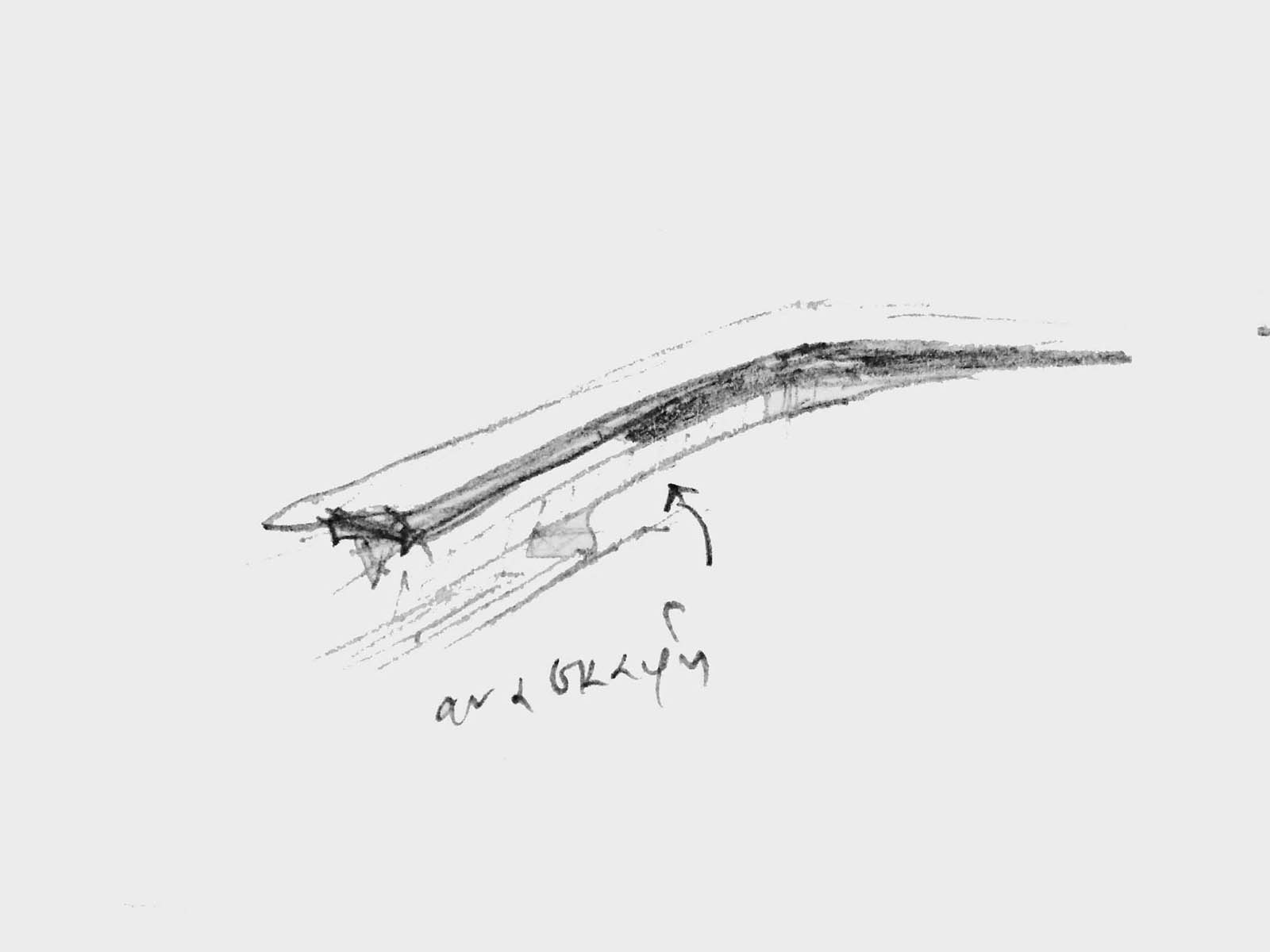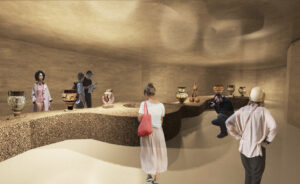
ανάδυση.αφροδίτης
This dig reveals history through time and water, basic element of life representing fertility, Aphrodite rising from the foam on the shores of Cyprus, a symbol of beauty and love. Her tresses, beautifully captured in Boticceli’s masterpiece The birth of Venus, create the trails in the garden and the surrounding space of the museum on the one hand but also the culmination of the exhibition space, thus creating a passage/connection of the interior with the exterior, of the underground with the over ground, crossing the shell Aphrodite travelled with. The shell, still immersed in the water, water which falls impetuously in the gap which devours the waterfall, giving a sense of depth to the excavation, a sense of time, of a passage in the past and from there to the future, showcasing the messages carried and transported by the objects found in the different layers of the earth. Like Persephone, resident of Cyprus as well, condemned to live six months above and six months below the surface. The gardens, Aphrodite’s locks of hair, constitute the southern limit of the excavation, the mound, laid to look like it swirls and aligns to the river as we move towards the south. At the same time the gardens define a gathering space for the public, a public square, while they themselves are reachable on their entirety for strolling and/or stopping.
The thick vegetation of the northern side continues towards the south, inviting/bringing the park to the interior, leaving to fade at the river banks. The north and south accesses are realised through the woods, heading in the direction of the public square and the deep-set complex. The main entrance of the excavation is found on the Nechrou side, facing the meeting point of the Nechrou street with the Chylonos street. Spaces develop mainly on two levels; one above ground, at street level, and one below ground. The one above looks like it fades as one walks along the main exhibition.
The idea of the layout was based on the revelation/exposure of a buried in the earth treasure and was captured as a gesture, defined by a uniform sloping movement. The movement is expressed in the slanting floor surface of the exhibition space, which obliges the visitor to a downward underground progressive course. A course which sets off at street level (+0.00m) and ends at 5m underneath the earth surface. Two concrete slabs, 28.00m wide, define the length of the inclined interior; the interior which in the North, upon reaching the street level, forms the entrance to the museum.



